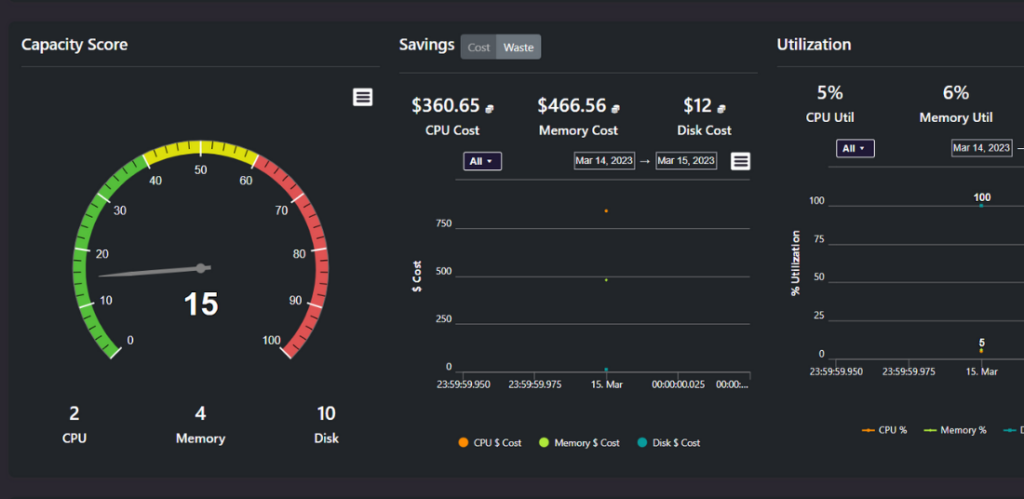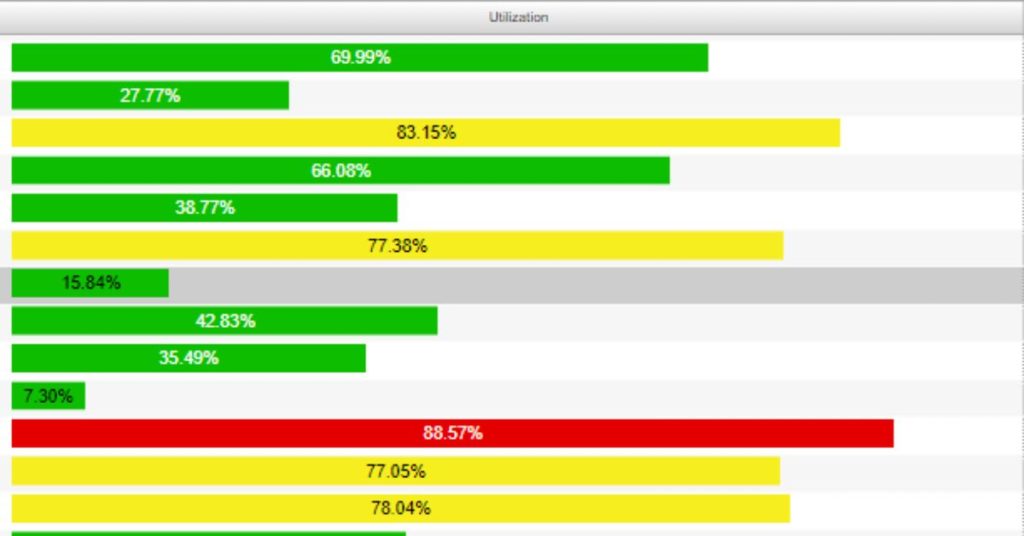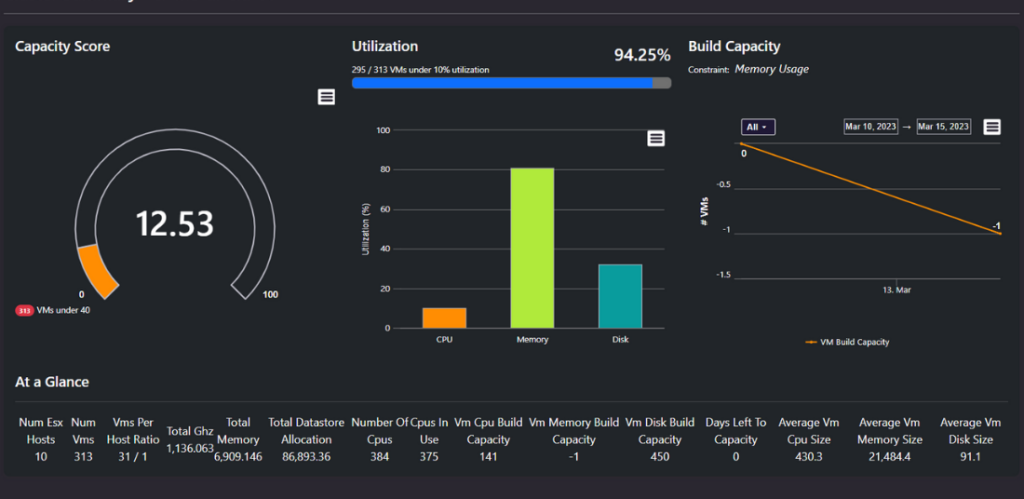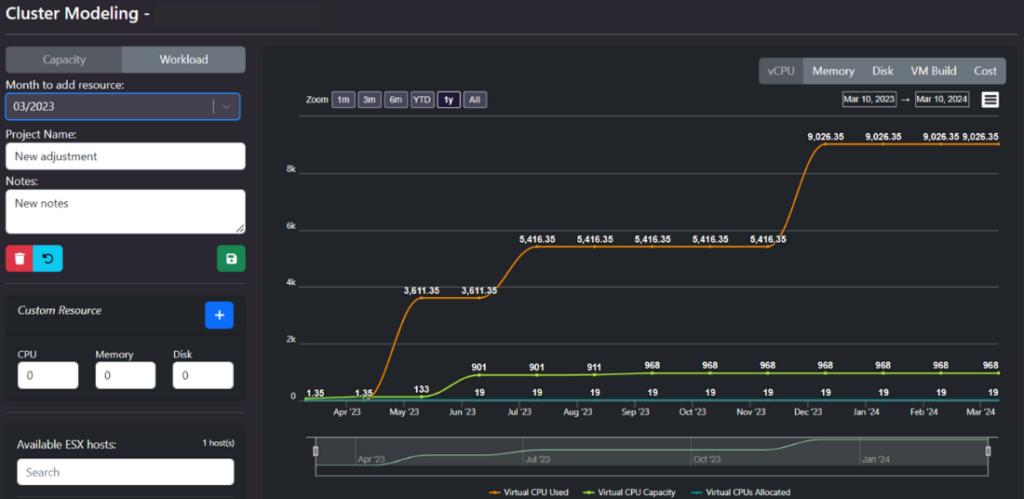Budget With Accuracy & Avoid Surprises
Use distinct modeling styles to evaluate past trends and confidently predict future device growth and performance.
Know months in advance when you’ll need additional storage space, and monitor for performance changes and outliers.
Prevent Outages and Right-Size Workloads
Receive alerts for devices approaching or surpassing customized capacity thresholds.
Track capacity trends beyond the device level by doing planning for pools, volumes, clusters, and resource groups.
Forecast Future Growth and Purchasing Needs
Limit spending and gauge capacity health with proprietary capacity scores and cost metrics for each individual virtual machine.
Compare costs in the cloud vs. on-prem and identify cloud growth and opportunities to save money and improve ROI.
Use Responsive Forecasting to Test the Impact of Future Changes
Modify capacity & performance models by inputting “what-if” scenarios and observing their expected impact on clusters or device capacities over time.
Test out your plans ahead of time so you be fully prepared – and make the best strategic decisions.
What is Visual One Intelligence®? Part 2: Forecast Capacity & Performance

The capacity management capabilities of Visual One Intelligence® were exceptional and enabled customers to substantially reduce storage infrastructure costs by accurately pre-planning growth requirements.
Capacity Planning Case Studies
Capacity Planning Automation Reduced Our Reporting Time by 50%
“Including the efforts needed to maintain our prior tool’s infrastructure, we saved an entire FTE – plus significant cost savings between the tools.”
– Capacity Planner | Fortune 500 Financial Institution
Detailed Capacity Planning Prevented a $1M Purchase
Most capacity planning is done at the device level. But sometimes there are warning signs hiding under the surface. This company used Visual One Intelligence® to look deeper and avoid a major problem.
– Fortune 500 Transportation Company
3 Most Common Capacity Planning Mistakes
There are 3 common mistakes we see tons of enterprise IT storage teams make when doing capacity planning. But they can easily be avoided – IF you know what they are.
Capacity Planning Insights

What Is Capacity Planning and How It Can Boost Your Team’s Efficiency
READ MORE >>
These FinOps Trends Will Define 2024
READ MORE >>










